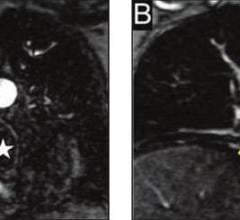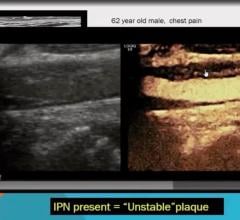October 25, 2007 - Study results presented at TCT 2007 demonstrated that the use of the isosmolar contrast medium Visipaque (iodixanol), a nonionic isosmolar contrast medium used for X-ray images of soft tissues, primarily blood vessels and organs, resulted in a statistically significantly lower rate of contrast-induced nephropathy (CIN) than the low osmolar nonionic contrast agent ioversol.
Visipaque is reportedly the only contrast medium available for intravascular use that is isosmolar at all iodine concentrations. The study was conducted in 250 patients with diabetes who underwent either coronary angiography to determine if there was disease in the arteries or percutaneous coronary intervention to improve circulation of diseased arteries that supply blood to the heart muscle. The authors reported the use of the isosmolar contrast medium Visipaque resulted in a statistically significantly lower rate of CIN at 72 hours following contrast medium administration when compared with the low osmolar nonionic contrast agent ioversol (2.5 percent vs 8.3 percent; p = 0.047). Study investigators also noted that in the group of patients at highest risk, those who underwent a percutaneous coronary intervention procedure and received higher amounts of a contrast medium, Visipaque use also resulted in significantly lower rate of CIN at 72 hours than ioversol (2 percent vs 13.5 percent; p = 0.02).
“The incidence of CIN in high-risk patients is elevated and of clinical concern to physicians,” said Felipe Hernandez, M.D., interventional cardiologist, Hospital 12 de Octubre, Madrid. “Our study shows a low incidence of CIN with Visipaque in patients with diabetes after coronary angiography or angioplasty.”
Don Black, head for Research and Development at GE Healthcare said, “The results of the study reported by Dr. Hernandez provide additional insight for Isosmolar Visipaque and its effect on renal function. Contrast-induced nephropathy remains a very important clinical issue for physicians and patients. These results further add to research demonstrating that Visipaque has a low incidence of CIN in high-risk patients.”
For more information: www.gehealthcare.com


 August 17, 2023
August 17, 2023 








